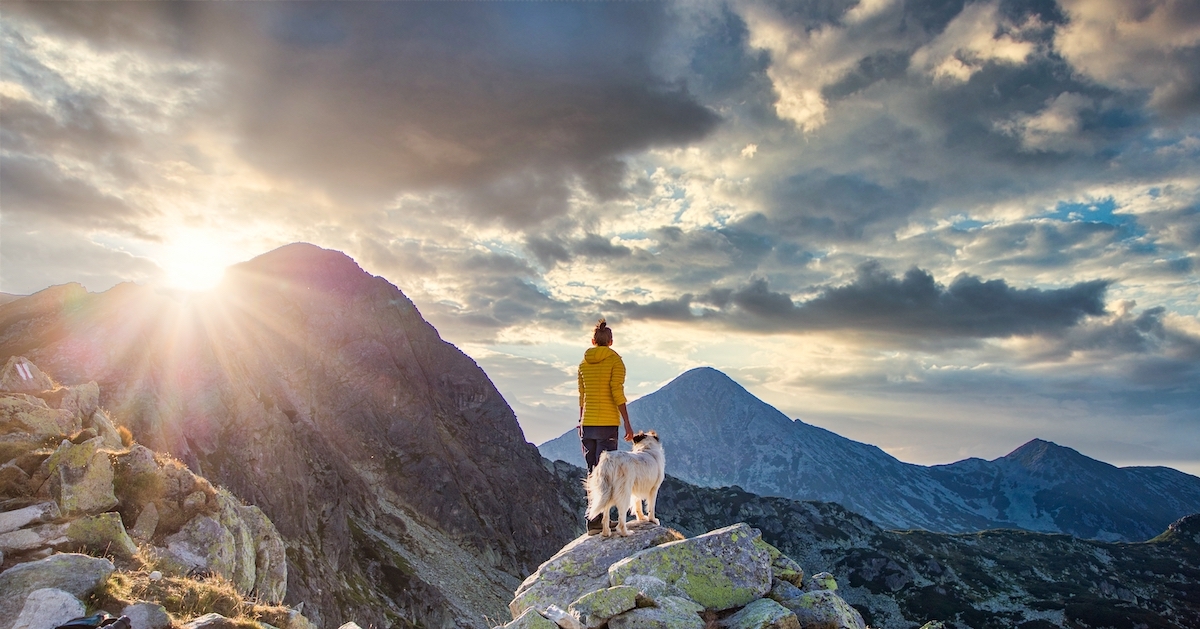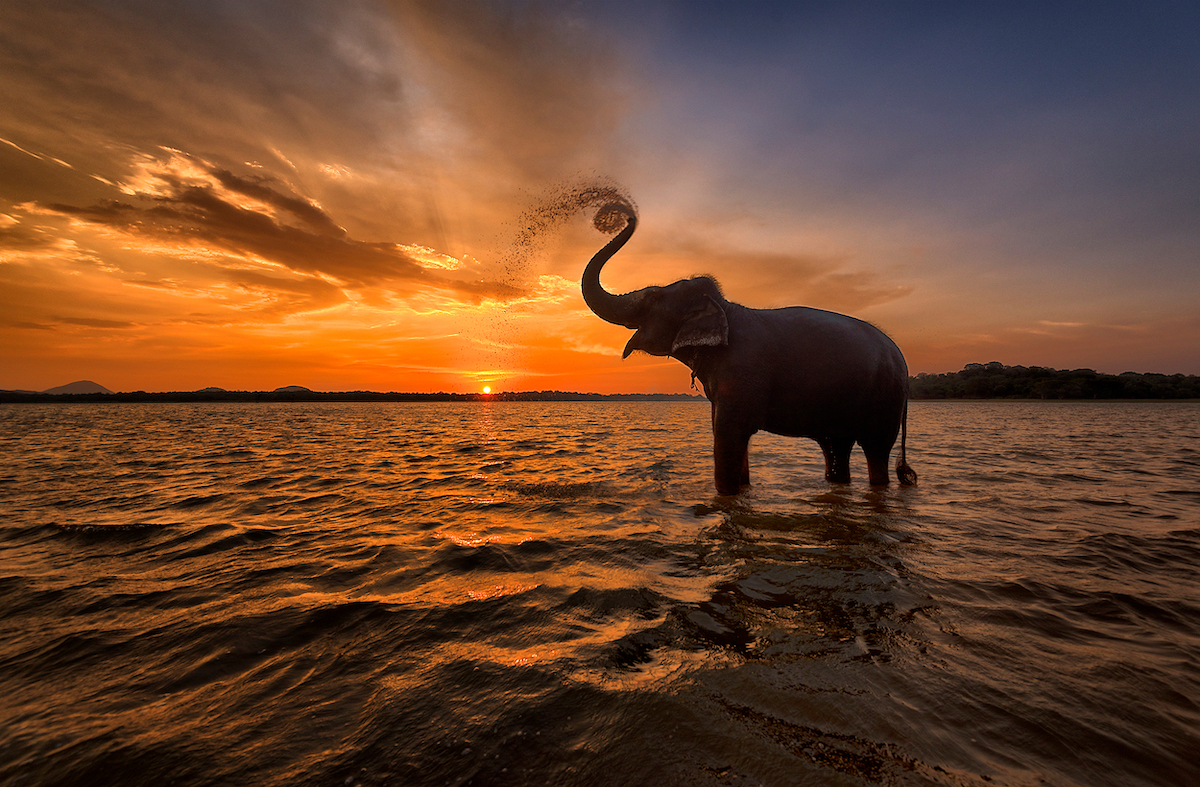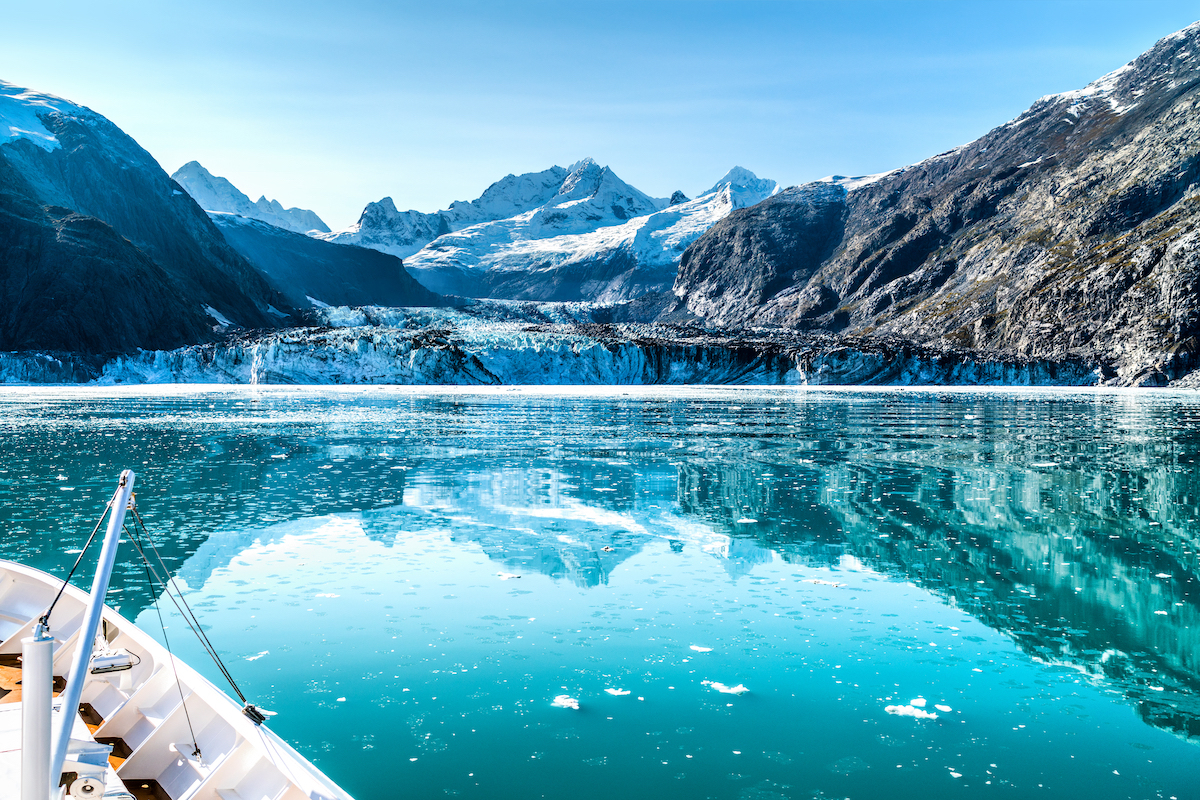Is mass tourism a blessing or a global curse? Svetlana Kolchik reflects on how the travel industry might change in the coming years.
Pristine beaches with glistening white sand and crystal water. Spotless jungle overflowing with wildlife. Untouched coral reefs. This is what the island of Ko Pha-ngan in the Gulf of Thailand looked like just a few decades ago — until the fateful day when the first tourists had arrived there.
This unspoiled natural gem changed in a matter of just a few years. Boats with visitors flocked to its bays and lagoons. Development projects ensued. Hotels, bars, souvenir shops now blocked the newly built promenades once home to just a few farmers’ and fishermen’s families. The businesses bustled. At some point Ko Pha-ngan started hosting one of the biggest and loudest beach events in the whole of Southeast Asia: a three-day-long Full Moon Party.
This remote tropical paradise had become yet another mass tourist spot.
One of the first tourists to visit to Ko Pha-ngan was Costas Christ, editor of National Geographic magazine. He regretfully admits sharing the whereabouts to his friends who then told other friends and so on.
Costas talks about this experience in a 2021 documentary titled The Last Tourist. Filmed in over 15 countries, from Kenya to Peru to Thailand, and guided by the world's leading tourism and conservation visionaries, this film exposes the darker side of one the world's largest industries and asks what it means to explore the world responsibly.
“We need to rethink the way we travel otherwise the damage to the planet will be irreparable,” says Canadian filmmaker Tyson Sadler who directed “The Last Tourist”.
Some of the film’s footage reveals rather disturbing content. Elephants in Thailand beaten into submission to entertain the tourists; irreversibly polluted ocean coasts, severely damaged ecosystems. Another cringe-worthy episode talks about a billion-dollar industry of “voluntourism” in countries like Cambodia and Kenya, where local orphanage children are exploited to service foreign visitors’ “savior complexes”.
Pristine beaches with glistening white sand and crystal water. Spotless jungle overflowing with wildlife. Untouched coral reefs. This is what the island of Ko Pha-ngan in the Gulf of Thailand looked like just a few decades ago — until the fateful day when the first tourists had arrived there.
This unspoiled natural gem changed in a matter of just a few years. Boats with visitors flocked to its bays and lagoons. Development projects ensued. Hotels, bars, souvenir shops now blocked the newly built promenades once home to just a few farmers’ and fishermen’s families. The businesses bustled. At some point Ko Pha-ngan started hosting one of the biggest and loudest beach events in the whole of Southeast Asia: a three-day-long Full Moon Party.
This remote tropical paradise had become yet another mass tourist spot.
One of the first tourists to visit to Ko Pha-ngan was Costas Christ, editor of National Geographic magazine. He regretfully admits sharing the whereabouts to his friends who then told other friends and so on.
Costas talks about this experience in a 2021 documentary titled The Last Tourist. Filmed in over 15 countries, from Kenya to Peru to Thailand, and guided by the world's leading tourism and conservation visionaries, this film exposes the darker side of one the world's largest industries and asks what it means to explore the world responsibly.
“We need to rethink the way we travel otherwise the damage to the planet will be irreparable,” says Canadian filmmaker Tyson Sadler who directed “The Last Tourist”.
Some of the film’s footage reveals rather disturbing content. Elephants in Thailand beaten into submission to entertain the tourists; irreversibly polluted ocean coasts, severely damaged ecosystems. Another cringe-worthy episode talks about a billion-dollar industry of “voluntourism” in countries like Cambodia and Kenya, where local orphanage children are exploited to service foreign visitors’ “savior complexes”.

Insta-tourism
“If tourists didn't pay for elephant rides and dolphin shows, the animals would be left alone,” Sadler comments in the film. “But demand creates supply. As a result, more than half a million animals around the world suffer from maltreatment, and mass tourism is one of the causes.”
There are a number of uncomfortable questions that the filmmakers suggest we ask ourselves next time we think about going on a trip:
Shortly before the pandemic, about 1000 Brits aged 18-33 took part in a national poll answering the latter question. More than 40% said that they chose the next vacation location based on how “Instagrammable” this place would be. For another 24% the cost and availability of alcoholic beverages was an important factor.
Only 9.4% of respondents said they were interested in experiencing the local cuisine while travelling and just a humble 4% wanted to go sightseeing.
In 2019, the Travel & Tourism sector contributed 10.3% to global GDP, according to the data from the World Travel and Tourism Council. Yet many of the most iconic tourist destinations are still steeped in poverty. The local communities benefit little from touristic pillaging as most of the cash flows into the pockets of international tour operations and hotel chains. In countries like Kenya only 14% of every dollar spent by tourists stays within the country. The rest is flushed over to travel companies and international interests.
“If tourists didn't pay for elephant rides and dolphin shows, the animals would be left alone,” Sadler comments in the film. “But demand creates supply. As a result, more than half a million animals around the world suffer from maltreatment, and mass tourism is one of the causes.”
There are a number of uncomfortable questions that the filmmakers suggest we ask ourselves next time we think about going on a trip:
- Do we know where exactly the money we spend on our holidays goes? How much of it stays in the countries we visit?
- What is the impact of “overtourism” on the local businesses and ecosystems?
- And what’s actually behind our destinations’ choices?
Shortly before the pandemic, about 1000 Brits aged 18-33 took part in a national poll answering the latter question. More than 40% said that they chose the next vacation location based on how “Instagrammable” this place would be. For another 24% the cost and availability of alcoholic beverages was an important factor.
Only 9.4% of respondents said they were interested in experiencing the local cuisine while travelling and just a humble 4% wanted to go sightseeing.
In 2019, the Travel & Tourism sector contributed 10.3% to global GDP, according to the data from the World Travel and Tourism Council. Yet many of the most iconic tourist destinations are still steeped in poverty. The local communities benefit little from touristic pillaging as most of the cash flows into the pockets of international tour operations and hotel chains. In countries like Kenya only 14% of every dollar spent by tourists stays within the country. The rest is flushed over to travel companies and international interests.

Taking a pause
The backlash against “overtourism” started gaining momentum in the late 2000s in the aftermath of the 2008 financial crash.
A few measures ensued. In the 2010s, some of Europe's most visited cities like Amsterdam, Prague and Florence launched tourist awareness campaigns of sorts. In Barcelona, where tourist numbers have quadrupled in a decade, the government issued a moratorium on the construction of new hotels in the historical districts.
In Thailand, the whole bay in the Andaman Sea shut down for visitors after boat anchors, washed off sunscreen, and plastic litter estimated to have destroyed up to 50% of the coral in its surrounding waters as well as much of local flora. Tucked away on Ko Phi Phi Le island in the Andaman Sea the once pristine Maya Bay beach ("The Beach'' with Leonardo DiCaprio was filmed there in 2000) hosted more than 6000 tourists daily. It reopened for visitors in 2022 but with a strict limit on numbers.
But despite the growing climate anxiety, the tourism industry still continued to grow at a rapid pace, with travel rates rising from 25 million people annually in 1950 to 1.6 billion in 2020. Just before the pandemic it was responsible for nearly one tenth of all the world's carbon emissions. An average-sized cruise ship dumped 80,000 litres of sewage into the oceans every day.
By the summer of 2020, in the wake of the pandemic, industry turnover fell by 80%. In 2021, international tourist arrivals were still 72% below the pre-pandemic year of 2019, according to estimates by UNWTO.
While the world had to slow down, so did - at least temporarily - the air pollution levels. In the United States, during the two years of the pandemic, carbon emissions dropped to the1990 levels. In places once overflooded with visitors natural environmental cycles began to slowly recover. Whale populations came back to the National Wildlife Refuge in Glacier Bay in Alaska. The newly deserted beaches of Phuket and Koh Samui saw turtles once again laying eggs for the first time in many years.
The backlash against “overtourism” started gaining momentum in the late 2000s in the aftermath of the 2008 financial crash.
A few measures ensued. In the 2010s, some of Europe's most visited cities like Amsterdam, Prague and Florence launched tourist awareness campaigns of sorts. In Barcelona, where tourist numbers have quadrupled in a decade, the government issued a moratorium on the construction of new hotels in the historical districts.
In Thailand, the whole bay in the Andaman Sea shut down for visitors after boat anchors, washed off sunscreen, and plastic litter estimated to have destroyed up to 50% of the coral in its surrounding waters as well as much of local flora. Tucked away on Ko Phi Phi Le island in the Andaman Sea the once pristine Maya Bay beach ("The Beach'' with Leonardo DiCaprio was filmed there in 2000) hosted more than 6000 tourists daily. It reopened for visitors in 2022 but with a strict limit on numbers.
But despite the growing climate anxiety, the tourism industry still continued to grow at a rapid pace, with travel rates rising from 25 million people annually in 1950 to 1.6 billion in 2020. Just before the pandemic it was responsible for nearly one tenth of all the world's carbon emissions. An average-sized cruise ship dumped 80,000 litres of sewage into the oceans every day.
By the summer of 2020, in the wake of the pandemic, industry turnover fell by 80%. In 2021, international tourist arrivals were still 72% below the pre-pandemic year of 2019, according to estimates by UNWTO.
While the world had to slow down, so did - at least temporarily - the air pollution levels. In the United States, during the two years of the pandemic, carbon emissions dropped to the1990 levels. In places once overflooded with visitors natural environmental cycles began to slowly recover. Whale populations came back to the National Wildlife Refuge in Glacier Bay in Alaska. The newly deserted beaches of Phuket and Koh Samui saw turtles once again laying eggs for the first time in many years.

Slow Travel
Based on UNWTO's scenarios for 2023, international tourist arrivals could reach 80% to 95% of pre-pandemic levels this year.
But will the industry stay the same? It doesn’t seem so. The paradigm has finally begun to shift. Local travel is emerging more than ever. In 2020, according to the European Committee for Transport and Tourism, two thirds of tourists in Europe chose to travel within their countries.
The entire cities and countries from Norway to Slovenia and Albania recast themselves as destinations for sustainable travel. Cities like Berlin, Gothenburg and some others set their sights on eco-tourism with new sustainable hotels and affordable public transport. Radisson Hotel Group and some other international hospitality companies took up a zero-emissions commitment by 2050.
Travellers’ expectations and priorities, too, are changing. A recent survey by Booking.com of its consumers across 29 global markets revealed that 77% said the environmental impact that travelling has on destinations is an important factor when deciding where to go, while 81% said they would want to stay in green or eco-friendly accommodation.
Industry experts suggest the style and geography of travel would continue to transform. We’d opt more for quality rather than quantity, preferring meaningful experiences rather than mere consumption. This includes bespoke routes and personalised solutions as alternative to packaged tours, staycations instead of short trips as well as making more conscious choices while on the road: staying in small, locally owned hotels or homes, eating in non-chain restaurants, buying local handicrafts and building bridges with other cultures.
Based on UNWTO's scenarios for 2023, international tourist arrivals could reach 80% to 95% of pre-pandemic levels this year.
But will the industry stay the same? It doesn’t seem so. The paradigm has finally begun to shift. Local travel is emerging more than ever. In 2020, according to the European Committee for Transport and Tourism, two thirds of tourists in Europe chose to travel within their countries.
The entire cities and countries from Norway to Slovenia and Albania recast themselves as destinations for sustainable travel. Cities like Berlin, Gothenburg and some others set their sights on eco-tourism with new sustainable hotels and affordable public transport. Radisson Hotel Group and some other international hospitality companies took up a zero-emissions commitment by 2050.
Travellers’ expectations and priorities, too, are changing. A recent survey by Booking.com of its consumers across 29 global markets revealed that 77% said the environmental impact that travelling has on destinations is an important factor when deciding where to go, while 81% said they would want to stay in green or eco-friendly accommodation.
Industry experts suggest the style and geography of travel would continue to transform. We’d opt more for quality rather than quantity, preferring meaningful experiences rather than mere consumption. This includes bespoke routes and personalised solutions as alternative to packaged tours, staycations instead of short trips as well as making more conscious choices while on the road: staying in small, locally owned hotels or homes, eating in non-chain restaurants, buying local handicrafts and building bridges with other cultures.



